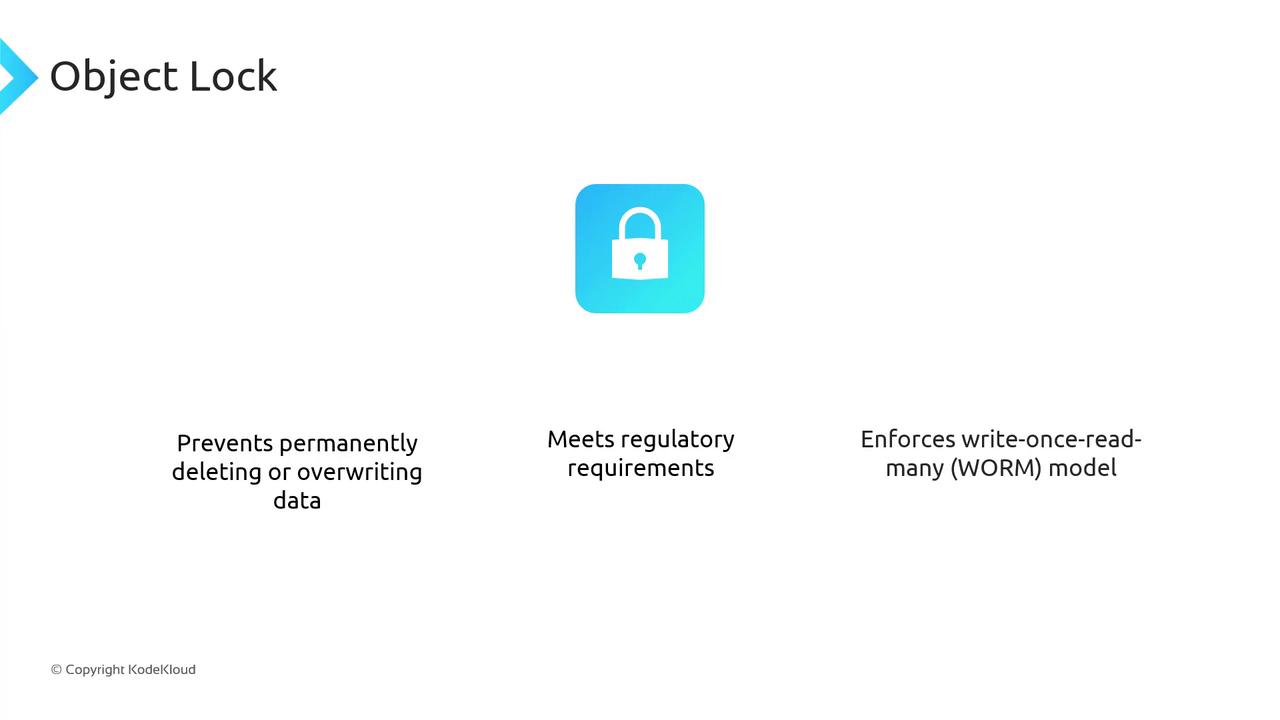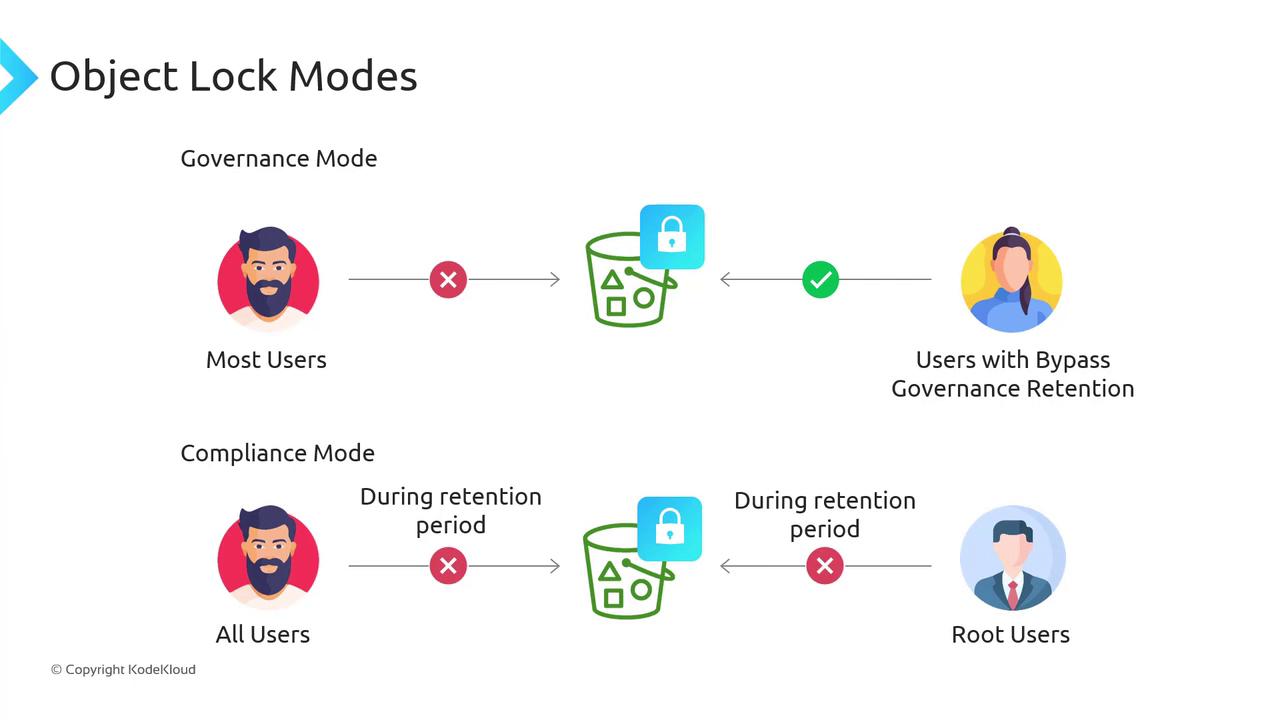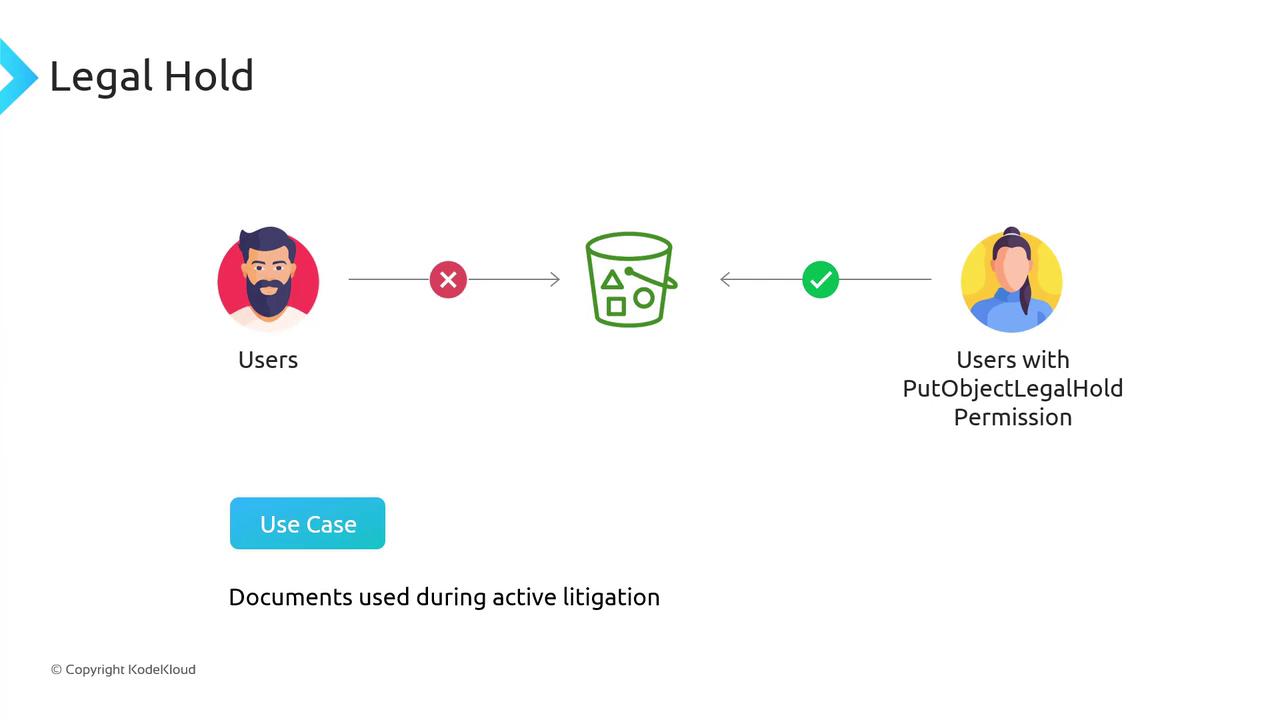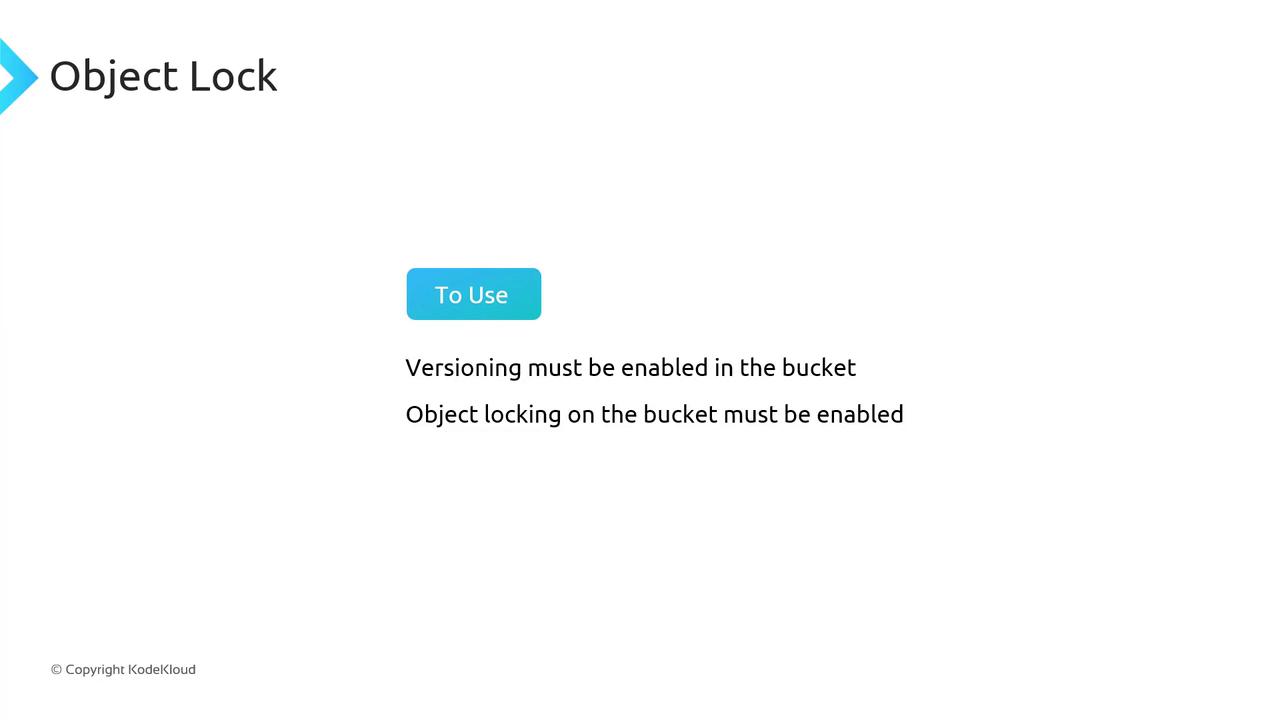Amazon Simple Storage Service (Amazon S3)
AWS S3 Management
S3 Object Lock
Amazon S3’s Object Lock feature enables you to enforce a write-once-read-many (WORM) model, ensuring complete data immutability. By preventing objects from being permanently deleted or overwritten, Object Lock helps you meet stringent regulatory and compliance requirements.

How Object Lock Works
You can apply Object Lock at two levels:
- Object-level – Lock individual objects when you upload them.
- Bucket-level rule – Automatically lock every new object in the bucket.
Once locked, objects cannot be deleted or altered until the retention period expires (or until you remove a legal hold).
Use Case: Financial Records Retention
Regulated industries—such as banking and insurance—must often retain records for a defined period. With Object Lock, you can specify exactly how long data must remain immutable.
![]()
For example, enforcing a five-year retention period ensures that critical financial records remain tamper-proof until that timeframe ends.
Object Lock Modes
Choose one of two retention modes when locking an object:
| Mode | Description | Required Permission |
|---|---|---|
| Governance Mode | Most users are blocked from deleting or overwriting. Principals with bypass rights can modify. | s3:BypassGovernanceRetention |
| Compliance Mode | All users—including the root user—are blocked from deleting or shortening retention. | None (only AWS account deletion) |
Note
Governance Mode lets security admins with the s3:BypassGovernanceRetention permission perform emergency deletions if needed.
Compliance Mode guarantees unbreakable WORM protection—for any removal, you must delete the entire AWS account.

Legal Hold
When the exact retention period is unknown—such as during active litigation—you can apply a Legal Hold. This disables object deletion or modification indefinitely until the hold is lifted.
Only principals with the s3:PutObjectLegalHold permission can remove a Legal Hold.
aws s3api put-object-legal-hold \
--bucket my-bucket \
--key important-document.pdf \
--legal-hold Status=ON

Prerequisites
Warning
Object Lock must be enabled at bucket creation and cannot be turned on afterward.
Ensure Versioning is also enabled on the same bucket.
- Enable Versioning on your S3 bucket.
- Enable Object Lock when you create the bucket.

Once both settings are enabled, you can configure retention periods, switch modes, and apply Legal Holds to satisfy compliance mandates.
References
Watch Video
Watch video content